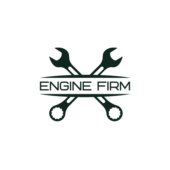A Manufacturing Bill of Materials (MBOM) is a detailed list of parts, components, and materials required to build a product. Understanding the MBOM is crucial for efficient production because it ensures that every necessary element is available and correctly assembled. This article will explore what an MBOM is, how it differs from an Engineering Bill of Materials (eBOM), and why it is vital for production efficiency and cost estimation.
Key Takeaways
- A Manufacturing Bill of Materials (MBOM) transforms the Engineering Bill of Materials (eBOM) into a production-focused document, essential for efficient assembly and procurement.
- Integrating the MBOM with ERP systems enhances collaboration across teams and improves cost estimation, reducing production delays and waste.
- Detailed manufacturing sequences in the MBOM facilitate accurate production processes, boost efficiency, and help maintain quality control throughout the manufacturing lifecycle.
What is a Manufacturing Bill of Materials (MBOM)?
A Manufacturing Bill of Materials (MBOM) provides a comprehensive list of all the parts and raw materials required for production, including the required materials for components needed and subassemblies required to create a product. Unlike a simple list, an MBOM shows how these parts relate during the manufacturing process, providing a comprehensive view of the product structure. This is crucial for ensuring that every component is accounted for and correctly assembled, including the bill of materials bom.
The MBOM transforms the Engineering Bill of Materials (eBOM) into a document focused on manufacturing. While the eBOM is primarily used during the design phase to outline the product’s design specifications, the MBOM adapts this information for practical use on the production floor. This transformation includes all parts and assemblies necessary to build a complete product, ensuring that nothing is overlooked during engineering and manufacturing boms.
A multi-level BOM, which is a type of MBOM, contains materials and quantities required for producing a finished product, with various sub-levels for detailed assembly. This multi-level approach is particularly beneficial for complex products that require several stages of assembly. The MBOM guides the manufacturing process by ensuring all necessary materials are available and used correctly, preventing delays and promoting a smooth workflow in manufacturing boms and manufacturing bom. The mbom structure plays a crucial role in organizing these elements effectively.
For example, a furniture manufacturer uses an MBOM to track all necessary raw materials, from screws to wooden panels. This detailed list aids in procurement and assembly planning, ensuring each piece of furniture is built accurately and efficiently.
The MBOM’s comprehensive nature supports efficient production, reduces waste, and helps avoid material shortages, ultimately leading to a higher quality finished product cost effectively.
Key Differences Between MBOM and EBOM
The Engineering Bill of Materials (engineering bom) and the Manufacturing Bill of Materials (MBOM) serve different purposes in the product lifecycle. The EBOM is primarily utilized during the design phase, focusing on the product’s technical specifications and design intent. It outlines the components and assemblies required from an engineering perspective, ensuring that the design meets all necessary criteria.
In contrast, the MBOM is tailored for the manufacturing process. It takes the design specifications from the EBOM and translates them into actionable steps for production. It includes:
- parts
- materials
- assembly instructions
- order of operations
- other manufacturing requirements Design changes in the EBOM can automatically update the MBOM through integrated ERP systems, maintaining consistency and accuracy.
The MBOM can also include additional information such as supplier details and engineering data, making it a more comprehensive document for manufacturing purposes. This integration ensures that the manufacturing team has all the necessary information to produce the product accurately and efficiently. Understanding these differences can enhance production, cost estimation, and collaboration.
Enhancing Production Efficiency with MBOM
The MBOM significantly enhances production efficiency by providing detailed assembly sequences. This clarity aids in planning and executing production processes, ensuring each step is performed in the correct order. For instance, specifying material quantities ensures that the correct amount of raw materials is available, thus reducing production delays caused by material shortages.
An updated MBOM is invaluable for manufacturers aiming at reducing waste. Detailing exact materials and quantities prevents overstocking and helps avoid unnecessary production waste. A furniture manufacturer, for example, identified production waste by analyzing their MBOM and made adjustments that led to more efficient production management.
Additionally, the MBOM helps reduce lead times. Clear production processes enable quicker manufacturing turnaround and faster delivery of the final product. This efficient production management not only enhances productivity but also improves customer satisfaction by ensuring timely production process delivery.
Ensuring Accurate Cost Estimation
An accurate MBOM is essential for precise cost estimation. It includes a few components and assemblies, ensuring no element is overlooked. This comprehensive approach allows manufacturers to estimate costs accurately and allocate budgets effectively, resulting in an accurate bill, including key components and an accurate bom, along with accurate boms.
Costing inaccuracies often occur when teams neglect to verify costs early in the design phase, potentially impacting product success. The transition to an MBOM facilitates better cost estimation, allowing manufacturers to price their products more accurately. For example, a manufacturer who transitioned to MBOMs found they could more accurately estimate and track costs, leading to better financial planning and decision-making, especially when dealing with an inaccurate bom.
The MBOM provides detailed cost breakdowns for each component and assembly, aiding in better financial forecasting. This precise tracking enables manufacturers to manage budgets more effectively and make informed decisions about production planning and procurement. Ultimately, this results in cost-effective manufacturing and higher customer satisfaction.
Improving Collaboration Across Teams
A standardized MBOM fosters better collaboration across different teams within a manufacturing company. By providing a comprehensive list of components required for production and the required quantities, it aligns the goals and expectations of various departments, from engineering to procurement to production teams, including the unit measure for each component. This alignment is crucial for ensuring that the final product meets design and quality specifications.
Implementing an MBOM facilitates better communication among teams, essential for maintaining quality standards throughout production. Integrating MBOM software development supports collaboration between departments like engineering and procurement, ensuring everyone has access to accurate bom data product data.
For instance, a manufacturer who implemented an MBOM experienced the following benefits:
- Improved collaboration between departments, ensuring all teams had access to current information and could work together more effectively.
- Integration of lifecycle management data within the MBOM to track revisions and design updates.
- Maintenance of synchronization across teams, enhancing productivity.
Integrating MBOM with Enterprise Resource Planning (ERP) Systems
Integrating the MBOM with Enterprise Resource Planning (ERP) business systems revolutionizes manufacturing processes. Detailed information in an MBOM enables effective integration with manufacturing operations management systems, enhancing production efficiency. This integration minimizes the procurement process errors and production delays, ensuring a smoother process.
A well-structured MBOM allows for better tracking of expenses associated with each component, aiding in financial forecasting and budget management. Using an MBOM also provides real-time visibility of inventory levels, aiding timely decision-making and preventing stockouts. For example, an accurate MBOM helps forecast demand, enabling manufacturers to order the right quantities of materials and prevent shortages.
The benefits of MBOM management include:
- Providing clear assembly and inventory management instructions to help prevent quality-related issues during production.
- Integrating the MBOM with other systems to enhance regulatory compliance, which is vital for maintaining product quality.
- Enabling companies to quickly adapt to supply chain disruptions by allowing for alternative materials or suppliers.
Using a Product Lifecycle Management (PLM) system significantly reduces BOM errors by centralizing data and improving visibility throughout the product’s lifecycle. Centralization ensures all teams have access to current and accurate information, fostering better collaboration and enhancing production efficiency.
How MBOM Supports Quality Control
The Manufacturing Bill of Materials (MBOM) plays a crucial role in quality control by ensuring that all necessary materials and processes are accurately followed. Providing a comprehensive view of required components and assembly sequences, the MBOM aids in quality assurance decision-making. This visibility and accuracy are essential for maintaining high standards throughout manufacturing.
An MBOM enhances production accuracy by detailing each material’s quantity and assembly order. This detailed information prevents errors and ensures the final product meets quality and design specifications. Incorporating quality control checkpoints within the MBOM ensures production adheres to standards, maintaining product integrity.
For instance, integrating manufacturing sequences into the MBOM allows for improved quality control, as each step can be monitored and evaluated to ensure consistency. This systematic approach ensures any deviations are quickly identified and corrected, maintaining the overall quality of the final product.
The Importance of Detailed Manufacturing Sequences in MBOM
Clear sequencing of the assembly process in an MBOM helps ensure that all components and sub assemblies are integrated efficiently, reducing the likelihood of errors during production. Detailing the exact assembly instructions, an MBOM allows teams to perform tasks with precision, minimizing delays and improving timelines.
Clearly defined manufacturing sequences in an MBOM enhance production planning by providing systematic instructions for each step. This systematic approach ensures each production phase is completed in the correct order, optimizing workflow and enhancing productivity through a manufactured manufacturing execution system.
Manufacturing sequences in the MBOM help identify potential bottlenecks, allowing for proactive adjustments to maintain workflow efficiency. Outlining detailed sequences in the MBOM leads to better resource allocation, ensuring efficient utilization of materials and labor in production scheduling.
For example, a well-structured MBOM with detailed sequences reduces production time by ensuring each phase is completed in the correct order. This organized approach improves efficiency and ensures the final product and shippable product meet desired quality standards.
Summary
In summary, the Manufacturing Bill of Materials (MBOM) is an indispensable tool for efficient production, accurate cost estimation, and improved collaboration across teams. By transforming the Engineering Bill of Materials (eBOM) into a manufacturing-focused document, the MBOM ensures that all necessary materials and processes are accurately followed, supporting quality control and reducing production time. The integration of MBOM with Enterprise Resource Planning (ERP) systems further enhances overall production management and regulatory compliance.
Understanding and implementing an MBOM can significantly improve your manufacturing processes, leading to higher productivity, cost-effectiveness, and customer satisfaction. As you embark on this journey, remember that the MBOM is not just a list of materials but a comprehensive guide that drives efficient and effective manufacturing. Embrace the power of MBOM and transform your production line into a well-oiled machine.
Frequently Asked Questions
What is the difference between an MBOM and an EBOM?
The Engineering Bill of Materials (EBOM) is primarily concerned with the product’s technical specifications during the design phase, whereas the Manufacturing Bill of Materials (MBOM) outlines the assembly process and operation sequence for manufacturing. Thus, EBOM focuses on design, while MBOM emphasizes production.
How does an MBOM enhance production efficiency?
An MBOM enhances production efficiency by clearly outlining assembly sequences and material quantities, which reduces lead times and facilitates effective planning. This structured approach ensures that each step of the production process is executed correctly.
Why is accurate cost estimation important in manufacturing?
Accurate cost estimation in manufacturing is essential for effective financial planning and decision-making, as it allows for precise budgeting and resource allocation, ensuring that all necessary components and assemblies are accounted for. This leads to better management of production costs and enhances overall profitability.
How does an MBOM improve collaboration across teams?
An MBOM enhances collaboration across teams by standardizing processes, aligning goals, and improving communication, thereby ensuring all departments access accurate product data. This unified approach fosters teamwork and efficiency in product development.
What are the benefits of integrating an MBOM with ERP systems?
Integrating an MBOM with ERP systems significantly enhances production efficiency and provides real-time inventory visibility. This integration minimizes procurement errors and aids in adapting to supply chain disruptions, ensuring regulatory compliance and effective expense tracking.

